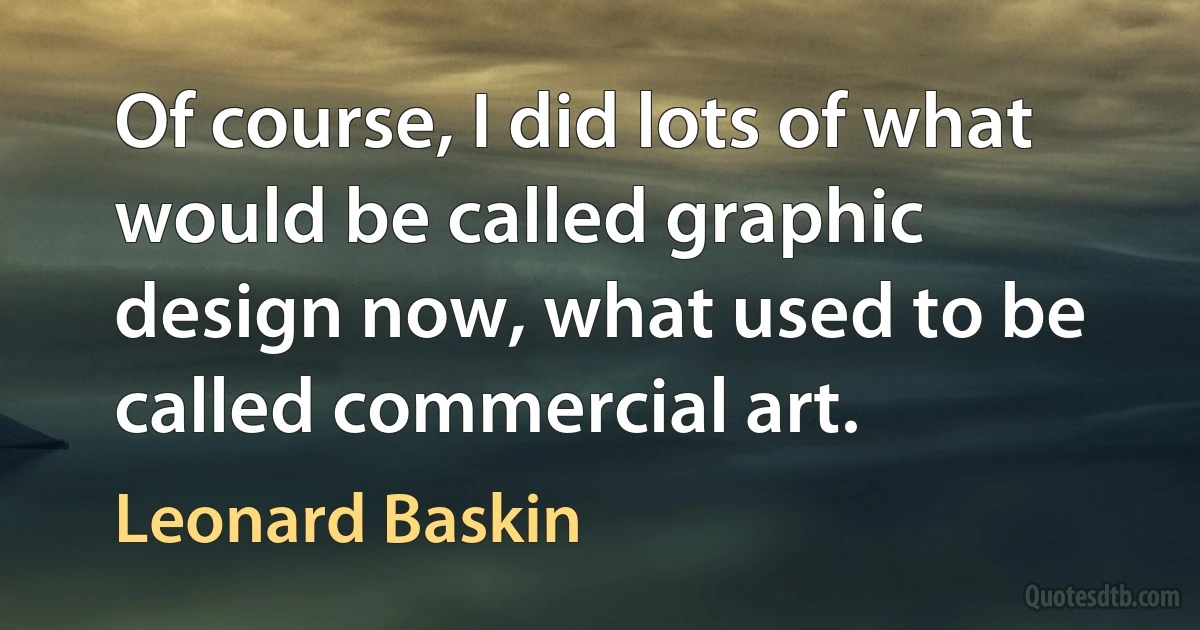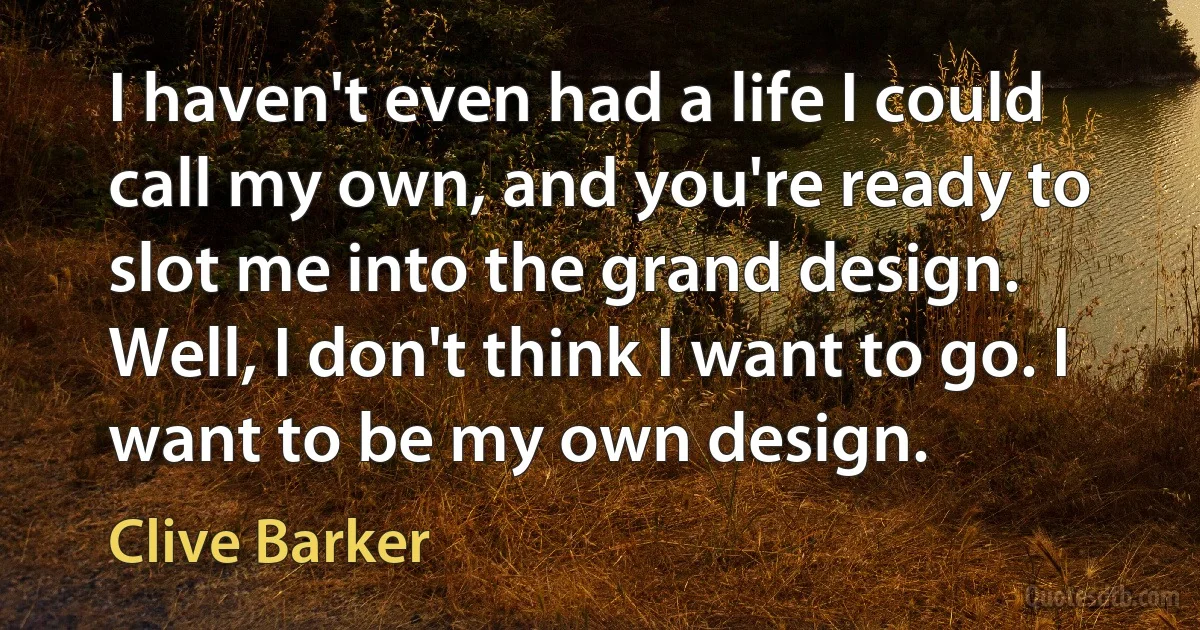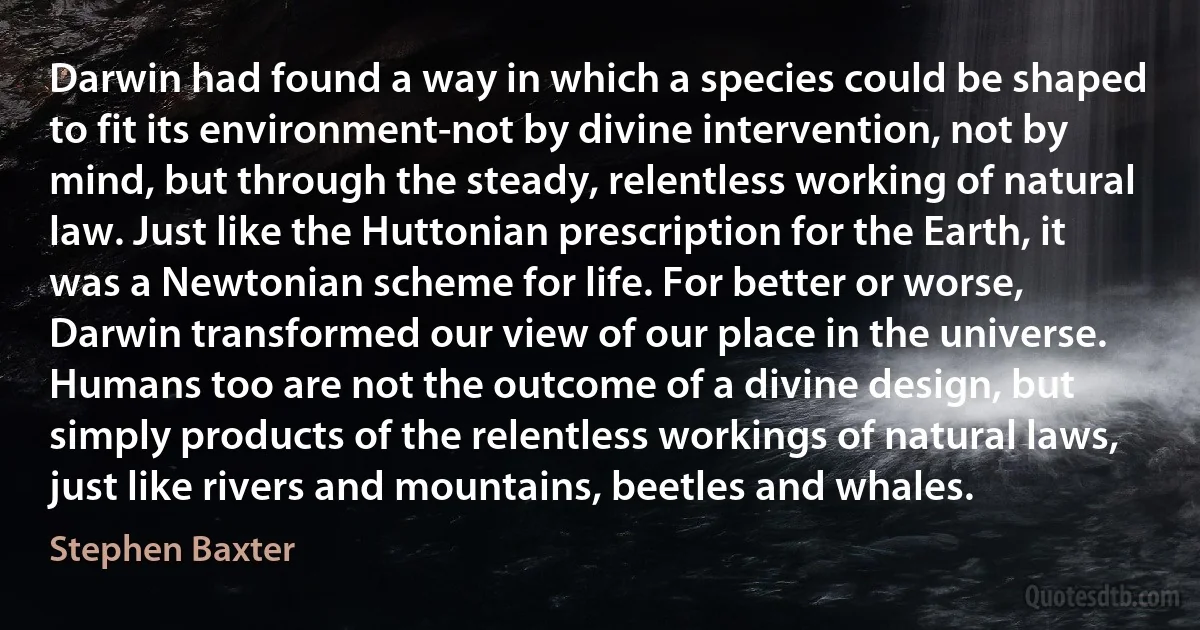Design Quotes - page 19
As a graduate student at Yale, I studied the whole of Christian theology but focused my attention on the Darwinian controversies. I wanted to get to the root of the conflict between Darwinian evolution and Christian doctrine. In the course of my research I learned (to my surprise) that biblical chronology played almost no role in the 19th- century controversies, since most theologians had already accepted geological evidence for the age of the earth and re-interpreted the days in Genesis as long periods of time. Instead, the central issue was design. God created the cosmos with a plan in mind. This affirmation is among the most basic in all of Christianity (and other theistic religions as well, including Unificationism). And that plan included human beings as the final outcome of the creative process: we are created in the image of God.

Jonathan Wells
... it's time for the opening lecture in Test Design 101: Consider: a woman claims to be a musician. You seat her at a piano and demand that she prove her claim. She cannot play the piano, and you conclude that her claim has been invalidated. Hardly. You see, the lady is a cellist....
You cannot challenge a claimant to do something they've never claimed they can do. That's why, at the JREF, we design a protocol only after the applicant has clearly stated (a) what they can do, (b) under what conditions, and (c) with what expected degree of success. And, the applicant must find the protocol appropriate, fair, agreeable, and adequate to prove their claim.

James Randi
Ecological rationality uses reason – rational reconstruction – to examine the behavior of individuals based on their experience and folk knowledge, who are ‘naïve' in their ability to apply constructivist tools to the decisions they make; to understand the emergent order in human cultures; to discover the possible intelligence embodied in the rules, norms and institutions of our cultural and biological heritage that are created from human interactions but not by deliberate human design. People follow rules without being able to articulate them, but they can be discovered.

Vernon L. Smith
This country and this people seem to have been made for each other, and it appears as if it was the design of Providence, that an inheritance so proper and convenient for a band of brethren, united to each other by the strongest ties, should never be split into a number of unsocial, jealous, and alien sovereignties.

John Jay
Gambling, in the ultimate study, stems from the passive, the submissive, the irresponsible in human nature; the gambler is one of an inferior lickspittle breed who turns himself belly-upward to the capricious deeds of Luck. Examine now the man of strength and action: he is never led by destiny. He drives on a decided course, manipulates the variables, and instead of submitting to the ordained shape of his life, creates a pattern to his own design.

Jack Vance
Our amendment earmarks $10 million out of the account called Army Research, Development, Test and Evaluation. The money would go to a research program administered by the Army Medical Research and Materiel Command in the DoD, for identifying the biological mechanisms behind the illnesses - particularly the neurological and immunological ones; the chronic disease effects; better diagnostic criteria for the illnesses; and identification of treatments. The MRMC will design a research plan for that purpose, relying heavily on the expertise outside DoD and the VA. It will be subject to peer review by experts, a significant number of which will be independent of DoD.$10 million will have a large impact on veterans who rely on the government to take care of them after they have taken care of us.I urge my colleagues to support the Kucinich-Shays-Sanders amendment. Vote 'yes' to restore research funding for Gulf War Illnesses.

Dennis Kucinich
Animation in itself is an art form, and that's the point I think always needs clarification. True animation exists without any background, or any color, or any sound, or anything else; it exists in your hand. And you can take it and flip it. [...] What makes animation is the fact that you have a series of drawings that move. You don't even have to have a camera, you see; animation exists without it. If you want to broaden your audience, or make it more colorful or add music, then you put it under a camera one frame at a time, and then you run it at the same speed as you flip it, and then you have animation. If it depends basically upon soundtrack, or basically upon music, or color, graphic design, or anything else to sustain itself, then it is not unique to animation.

Chuck Jones
At the base of the plane, Styles freelance photographer is down on one knee, going handheld, still in the same Hawaiian shirt. The famously reclusive R. Vaughn Corliss is nowhere in view. Doug Llewellyn's wardrobe furnished by Hugo Boss. The Malina blanket for the artist's lap and thighs, however, is the last minute fix of a production oversight, retrieved from the car of an apprentice gaffer whose child is still nursing, and is not what anyone would call an appropriate color or design, and appears unbilled. There's also some eleventh hour complication involving the ground level camera and the problem of keeping the commode's special monitor out of its upward shot, since video capture of a camera's own monitor causes what is known in the industry as feedback glare - the artist in such a case would see, not his own emergent Victory, but a searing and amorphous light.

David Foster Wallace
No doubt my poetry errs on the side of oddness. I hope in time to have a more balanced and Miltonic style. But as air, melody, is what strikes me most of all in music, and design in painting, so design, pattern, or what I am in the habit of calling inscape is what I above all aim at in poetry. Now it is the virtue of design, pattern, or inscape to be distinctive, and it is the vice of distinctiveness to become queer. This vice I cannot have escaped.

Gerard Manley Hopkins
There was no design in this: no sense of improvement, of purpose. All that was happening was that each organism was struggling to preserve itself, its offspring, and its kin. But as the environment slowly changed, so through relentless selection did the species that inhabited it. It was not a process fueled by life, but by death: the elimination of the less well adapted, the endless culling of inappropriate possibilities. But the potential of an unseen future was no consolation to those who lived through the relentless culling.

Stephen Baxter
My life appeared to me as unnatural, uncertain and incredible as the design on the pencase I am using at this moment. It seems that a painter who has been possessed, perhaps a perfectionist, has painted the cover of this pencase. Often, when I look at this design, it seems familiar; perhaps it is because of this design that I write or perhaps this design makes me write.

Sadegh Hedayat



